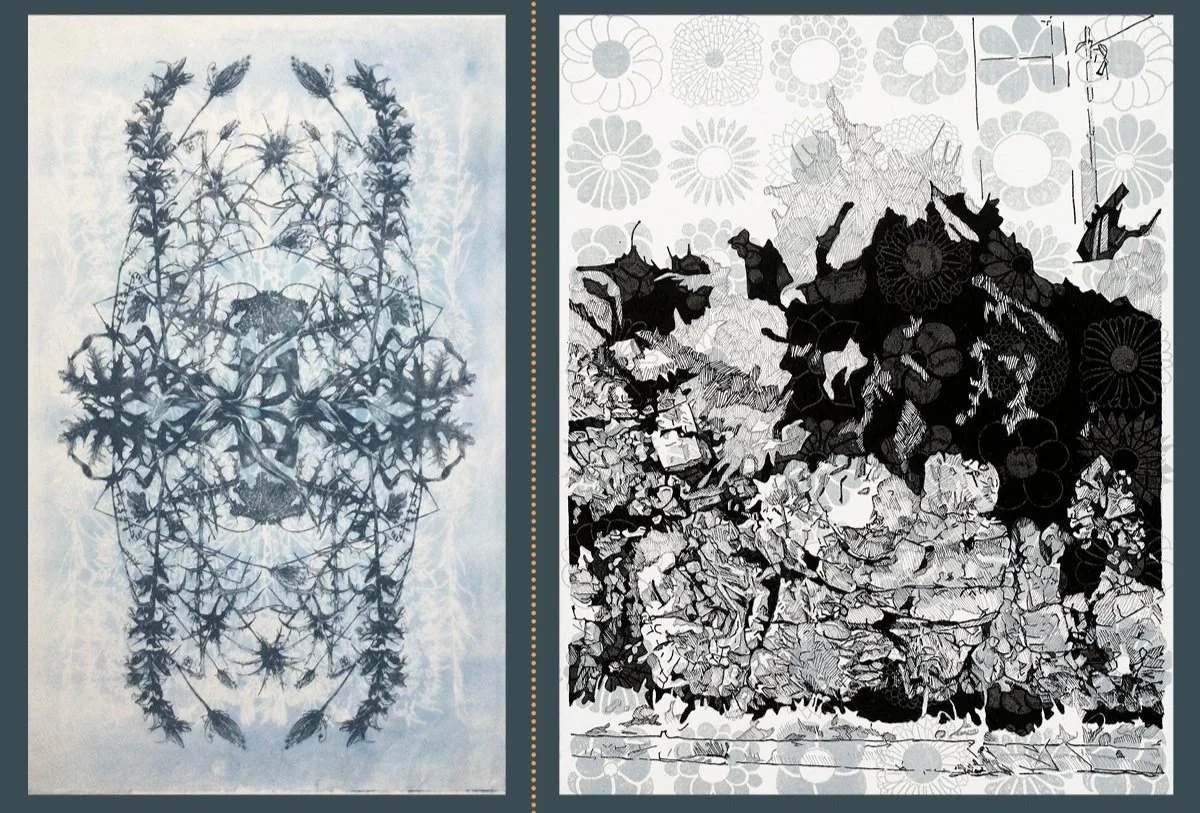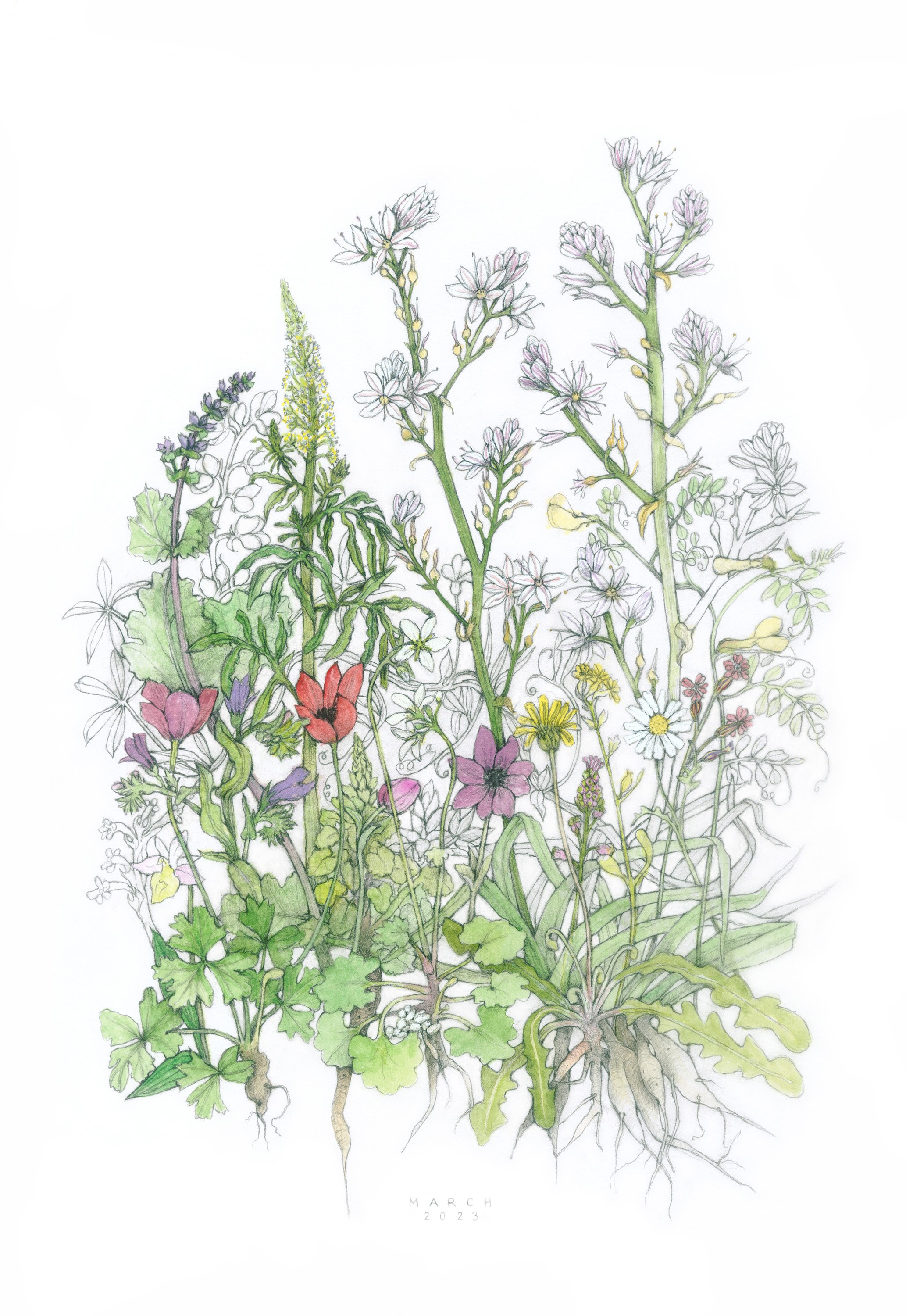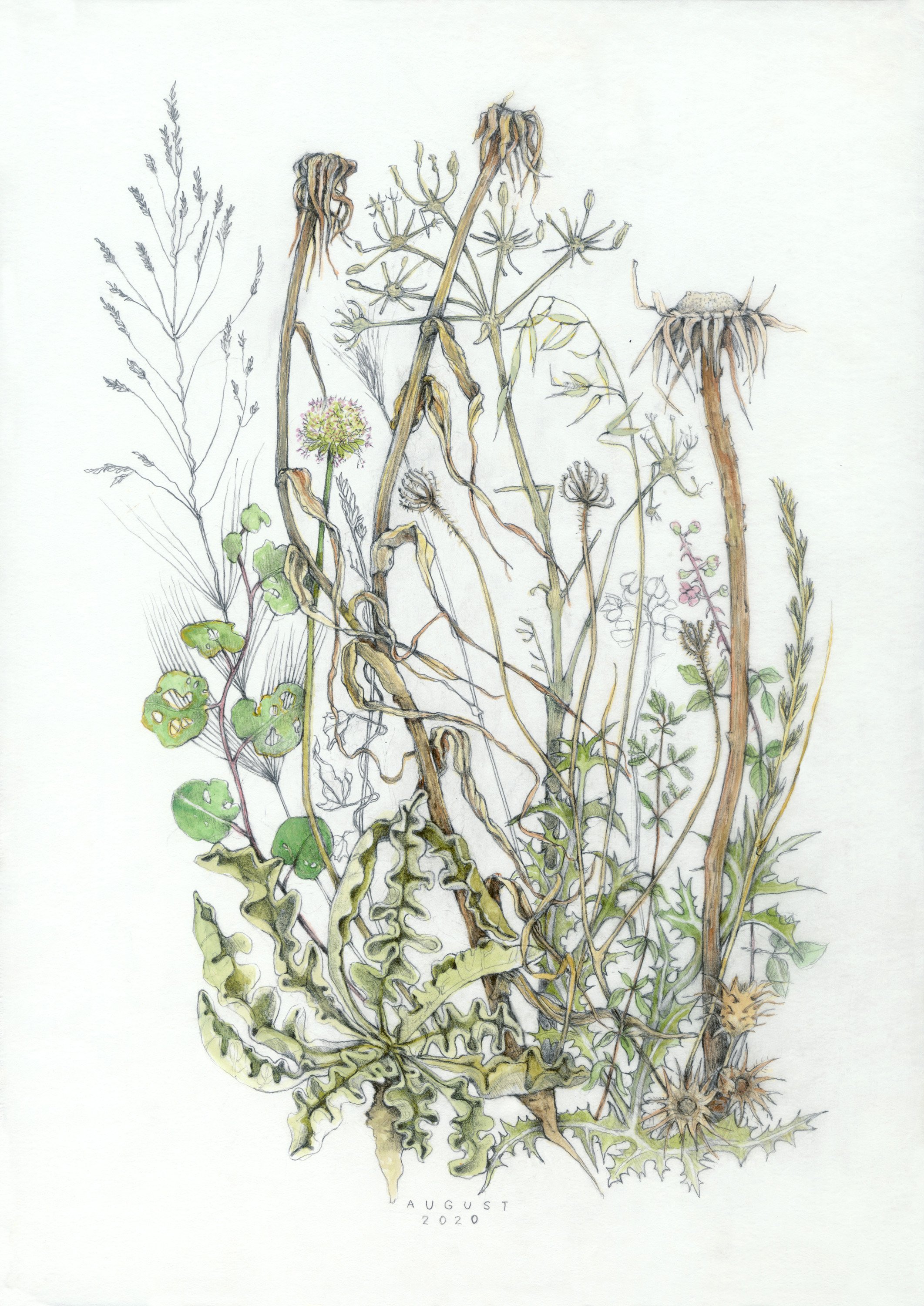Diagonal Latitudes
Featuring Eirene Efstathiou & Judith Allen-Efstathiou
September 14 - November 4
Opening Reception: September 14, 5 - 7pm
Featured Artists
About The Show
Diagonal Latitudes features mother-daughter artists Judith Allen-Efstathiou and Eirene Efstathiou. Their work not only straddles two generations but also two worlds: Maine and Greece. At times, their work is unmistakably of one place or the other, but it can also blend these disparate worlds in unexpected ways, such as when copper from the dome of the Maine State House is repurposed to depict the flora of the Mediterranean. Similarly, the show juxtaposes while often harmonizing the historic and the present, the domestic and the public, the natural and the man-made. Otherwise quiet walks in nature become acts of protests while sites of resistance depict calm neighborhood streets.
Artists’ Statements
Judith Allen-Efstathiou
My works in Diagonal Latitudes fall between 2D and 3D expressions (my sculptures are flat, my works on paper are sculptural) and stylistically between the decorative and fine arts. I am a rambler on the ancient footpaths of Kea, the streets of Athens and in the woods of Maine where I am drawn to the power and weight of visible history: ancient structures and ancient trees. Diagonal Latitudes includes works from both sides of my dual life in Greece and Maine and represents my two major concerns: historic preservation and environmental protection.
I returned to making sculpture after many years with a commission to repurpose copper removed from the dome of the Maine State House. As part of that commission I received additional copper I uses in a series of botanical relief sculptures include images of trees threatened by blight, such as the brown ash central to Wabanaki basket weaving and culture. The series brings the natural beauty of the Maine woods into interior spaces.
I began the second series of my artworks in Diagonal Latitudes as a protest to planned paving of an ancient footpath on Kea Island, Greece, where I have a house. For my protest, I began a ritual of daily walks along the footpath during the months that I could be on the island. My project Mapping the Walk is a record of those walks in a series drawings of the ephemeral life cycle of the plants that grow near the path. The drawings are my way of honoring and documenting the footpath itself. The drawings reference stylistically the botanical watercolors of Austrian artist Ferdinand Bauer, who traveled with the English botanist John Sibthorp to document the rich biodiversity of the eastern Mediterranean in 1784–87. They are the basis of a series of cyanotypes mirroring the wonderful history of botanical ornamentation in the decorative arts.
Eirene Efstathiou
My work in the show draws from several bodies of work that deal with the landscape as an archive of labor, toil, and as a site of resistance. Juxtaposing these with domestic themes, the pieces often blur the boundaries between public and private and instead dwell in the liminal space between public and private space alluding to the varied meanings of the domestic. Who arbitrates public space and the commons? What delineates its administrative and psychogeographic boundaries? I pose these questions by observing what history is visible, what is erased, and what remains as a palimpsest.
The imagery is drawn from my own photographs from landscapes so familiar to me that they are practically domestic spaces, from Athens and the Cycladic island Kea: drawings of terraced hillsides built up over centuries of farming in an inhospitable climate, and urban rocks from Athens, embedded in the fabric of the city from a previous geological/urban planning age. I overlay this imagery on patterns from Formica table tops popular in Greece in the 70s and 80s that I have copied and printed. Other works draw from the imagery compiled in the Athenian neighborhood of Exarchia, which both historically and presently is known as a neighborhood of left-wing resistance. Here, I do a natural history of Exarchia. Finally, the archival works explore these themes via a more personal history, my childhood family home, my lineage as the child of artists and a variety of domestic objects.
Preview the Exhibition
(CLICK IMAGE TO ENLARGE; CURSOR OVER ENLARGED IMAGE FOR DETAILS)



























































